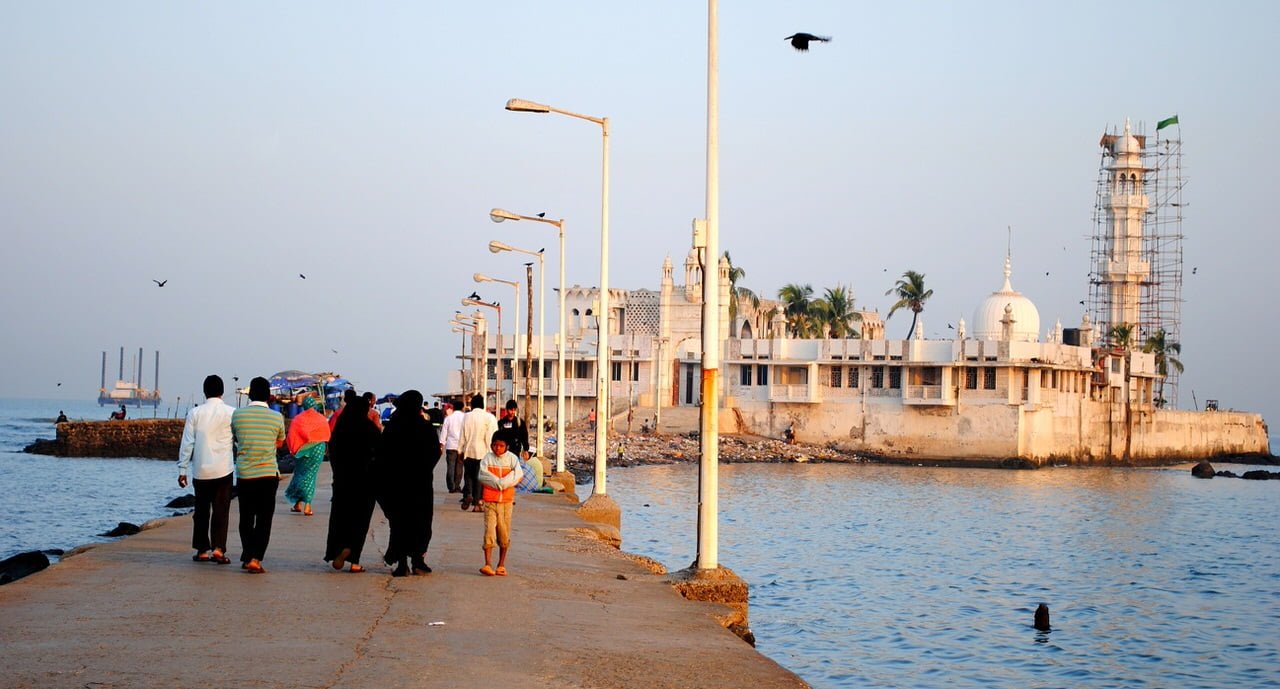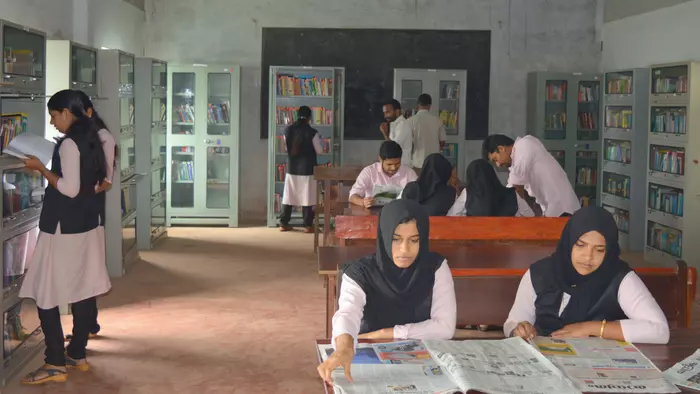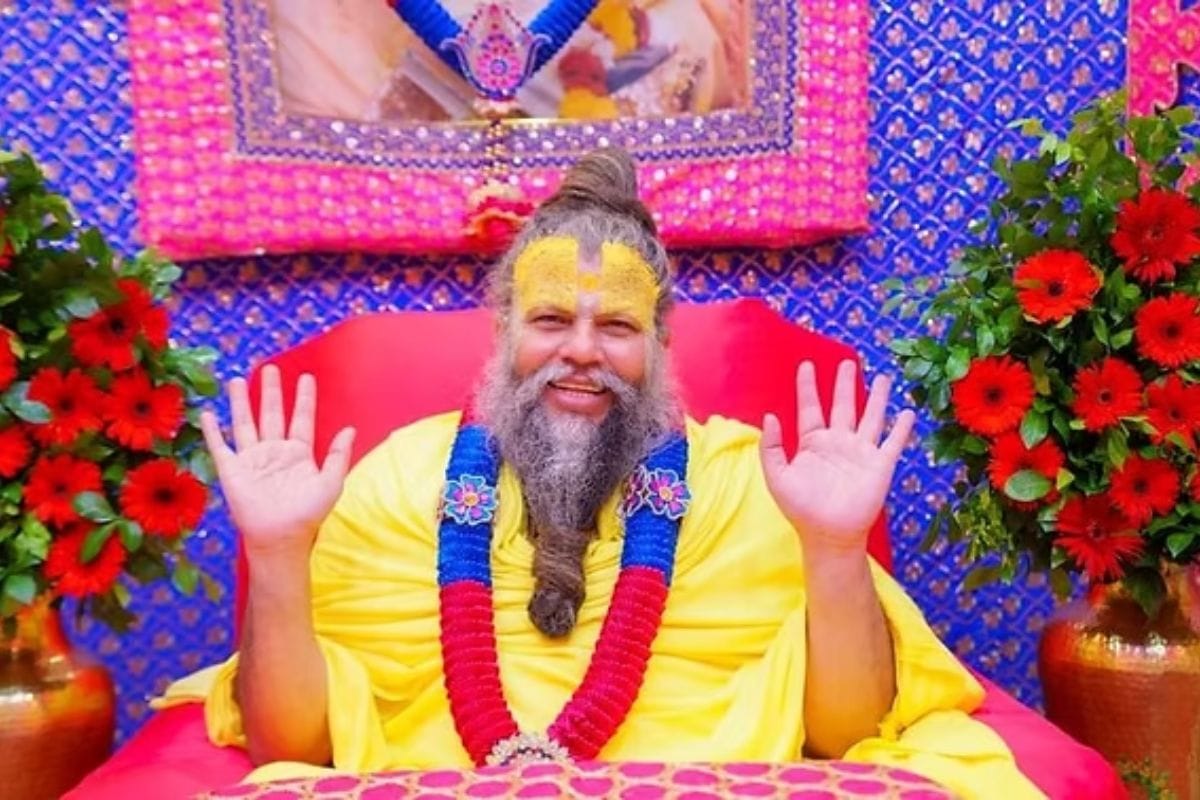The Bombay High Court on Friday allowed women equal access to the inner sanctum of the Haji Ali dargah, the 600 year old tomb of the Sufi Muslim saint Sayyed Pir Haji Ali Shah Bukhari. In 2012, the dargah’s trust had banned women from entering its inner sanctum, citing the entire act as a grievous sin. The Court pronounced its verdict in response to a petition by the Bharatiya Muslim Mahila Andolan that had challenged the trust’s ban. Following this verdict, the trust requested for some time to challenge the verdict in the Supreme Court. The court has now put a six week stay on the ruling.
The verdict has highlighted the debates around feminism and religion, and fixated our attention to the vital relationship that both share. As we know, especially in a country like India spirituality and religious ethos are not only a part of the fundamental belief system of people, but also a crucial segment of their everyday lived experiences. It shapes their identity and controls their access and mobility in the society they live in. That feminism and religion are then being used as tools for gaining gender equality and religious equality by many women and women’s groups, is something that feminists cannot avert their attention from. The struggle for right to worship and right to public spaces both need to be seen as a part of the larger social reform movement and women’s movement in India.
The Haji Ali dargah trust had cited a variety of reasons for imposing the ban – from condemning the ‘mixing of men and women and their coexistence in such close proximity to women showing their breasts while bending over. The High Court asked the trustees to reconsider the ban but the dargah cited that the Indian Constitution and particularly Article 26 of the Constitution confers upon the trust, “a fundamental right to manage its own affairs of religion.”
After the ban was imposed two Muslim women Noorjehan and Zakia started a silent revolution demanding the much needed space for Muslim women to speak up against the ban. They formed the Bhartiya Muslim Mahila Andolan in 2014 to challenge this decision and filed a PIL in the Bombay High Court. The BMMA believed that excluding women from the Haji Ali dargah amounted to gender discrimination and that Sharia law cannot prevail over the Indian Constitution. They strongly believed that women’s right to offer prayers in the sanctum is protected under Article 25 of the Constitution, which guarantees the right to freedom of religion.
This happened in 2015, around the same time when the Shani Shingnapur temple protest also happened. The Shani Shingnapur temple (Temple of Saturn) in Maharashtra came under controversy for banning women from entering the sacred open-air platform of the temple where the idol is placed. In November 2015, Trupti Desai, a Hindu woman breached the rule and entered the sacred place. As is known, it resulted in severe reactions from the temple authorities who then carried out purification rituals and also suspended several security guards. The Bhumata Brigade (Mother Earth Brigade) was formed by Desai in Maharashtra to fight against this discriminatory practice.
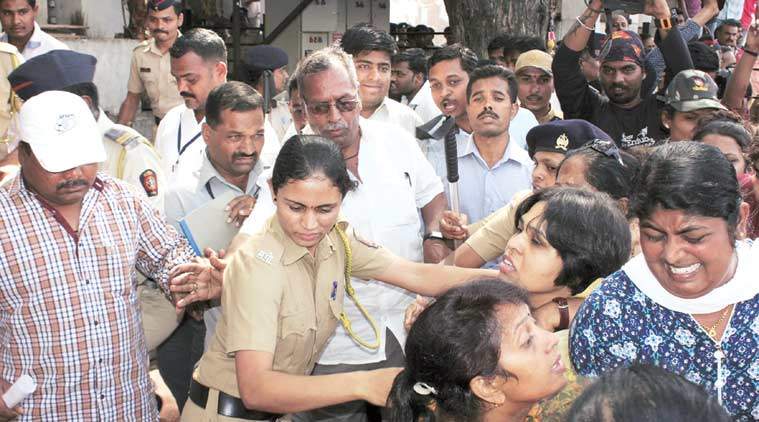
Trupti Desai, leader of the Bhumata Brigade, being dragged away by police during an attempt to offer prayers at the Shani Shingnapur temple. (The Indian Express Photo)
The incident at Sabrimala in Kerala also sparked similar outrage. In November 2015, the Board President of the historic Sabarimala temple said that he would consider letting in women between the ages of 10 and 50 if someone invented a machine to detect the “right time” for a woman to enter. The wrong time was obviously when the woman was menstruating. As a reaction to this, a young woman from Patiala, Nikita Azad, launched a Facebook campaign “Happy to Bleed” – gathering massive support on social media. She penned down a long open letter to the board president asking how menstrual blood can be seen as impure if that is the primary source for giving life.
These protests/movements gathered a lot of attention – from supporters and critics both. The people on the right criticized Trupti Desai by saying that the continuing traditions have an inherent logic that must be honoured. They shamelessly suggested women to pray where they were allowed to. Political opportunists called the act of resistance as a political stunt with a hidden agenda. Notwithstanding, the criticism further intensified the need to focus on the vitality of movement.
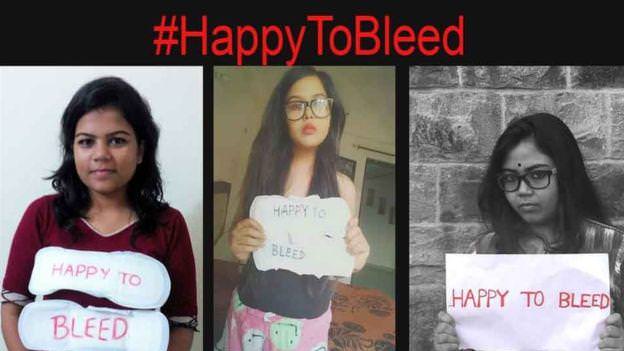
Image Credit: Happy To Bleed
One cannot override the possibility of the obvious cacophony that public protests cause amidst media. No wonder then that feminist critics were pointing out the probability of diversion from the pertinent duty of challenging hegemonic structures of the institution of religion. Despite it, one needs to consider the several ways in which these protests have led to the creation of a space for women within the realm of women’s rights and religious equality rights. It has opened the gates to the discourse on women’s right to worship. Simply because the larger structure of religion contributes to institutional patriarchy, feminists cannot do away with the amount of hard work and struggle that these women have endured to fight discrimination.
The Muslim women’s stand against the Haji Ali trust led to some path breaking demands and achievements. They not only reclaimed their faith but also subverted its patriarchal structures to some extent, by opposing the self-appointed male guardians of the religion and occupying space with them for a constructive dialogue. They vented voices that were previously unheard and silenced under religious patriarchy. With the support of the Quran and the Constitution both, Muslim women ensured that they stood up for their rights with not an iota of compromise to offer. One of the most unflinching change was the attack on Sharia Courts and the Muslim Personal Law. This was path breaking because it erased the ‘victim’ image of Muslim women. It was also a stern criticism of the western idea of retreating from the religion altogether – a slap on the face of Islamophobes! These women always believed that Islam is inherently a peaceful and compassionate religion which gives Muslim women equal footing with Muslim men. In 2014, they drafted their own personal law based on their interpretation of the Quran, a step that is historic and feminist on many levels.
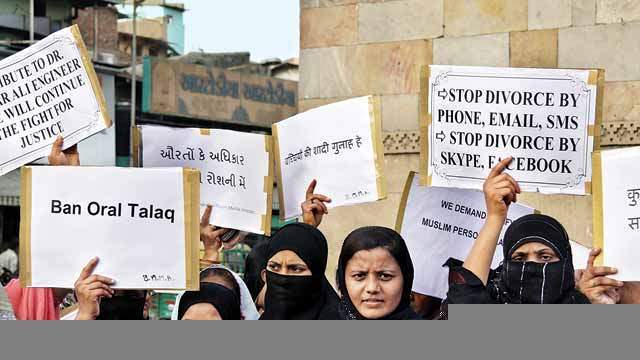
Image Credit: DNA
This demand for right to worship has been in existence since centuries in India. In the larger context it focuses on gender discrimination and women’s right to public spaces. It is a struggle against the socio-economic-religious growth and development model of India that does not pay heed to several such ways in which women are relegated within the walls of the home and not allowed to occupy space in the public.
The debate also forces us to expand our lens and look at the regressive Devadasi system outlawed in 1982, which was basically a practice where young pre-pubescent girls from the Dalit community were ‘married off’ to God or the local religious deity of the temple. Eventually, they were recruited into sex trade. Cut to contemporary times, Dalit women in some parts of the country are allowed in the temples as labourers for cleaning, but not as devotees. The system that was existing then, the one that persists now, and the struggles of women from different communities to claim these spaces all intersect to tell the inordinate ways in which women are related to religious spaces culturally, economically, socially, and/or materially. A feminist lens on the discourse of right to worship has to encompass the different ways in which women find meaning in and remain attached to religion.
Also read: Reading Feminism and Islam: A Starter Pack
Which brings me back to the verdict on Haji Ali Dargah. A recent article on Scroll.in reported how there are some women who are opposed to the idea of entering the shrine. It states that despite this historic verdict, some Muslim women are opposed to the whole idea of digressing. “No matter how clean women keep themselves, at the end of the day they are na-paak,” said Naseem Bano, a housewife in her 30s who often visits Haji Ali with her family on Fridays. Another woman Sharifa Pathan, referring to menstruation, echoed similar sentiments, “It doesn’t matter what the High Court said, we will not go inside Haji Ali anyway,” she said. “Only men are allowed inside a mazaar [dargah] because women have ladies problems.”
The discourse on right to worship should encompass the rights of these women to say no – and to acknowledge that feminism cannot afford to pick on individuals when all women exist within the social structures tied down by patriarchy, and not all women have the means and mobility to transgress. Having said that, the women who have raised their voice need to be given due recognition and vocal support. As a part of the women’s struggle, one has to understand that women are trying to navigate and bridge the gap between following their religious beliefs and working towards their individual desires by trespassing the barricades drawn for them. They are working towards the peaceful coexistence of two aspects that are usually seen as poles apart from each other.
To settle for a monolith singular understanding of the women’s right in the context of right to worship is dangerous and will do disservice to the significant aspect of ‘difference’. Not acknowledging the diversity of opinions from within the community will act counterproductive to women’s struggles in totality. A woman being prohibited to enter a certain religious place and a women asserting her right to follow her religious beliefs by saying no are different things and equally important, because it isn’t about what’s right or wrong – but about her rights.
About the author(s)
Nupur is a graduate in Women’s Studies. Interests include research, academia, gender, sexuality and politics.
